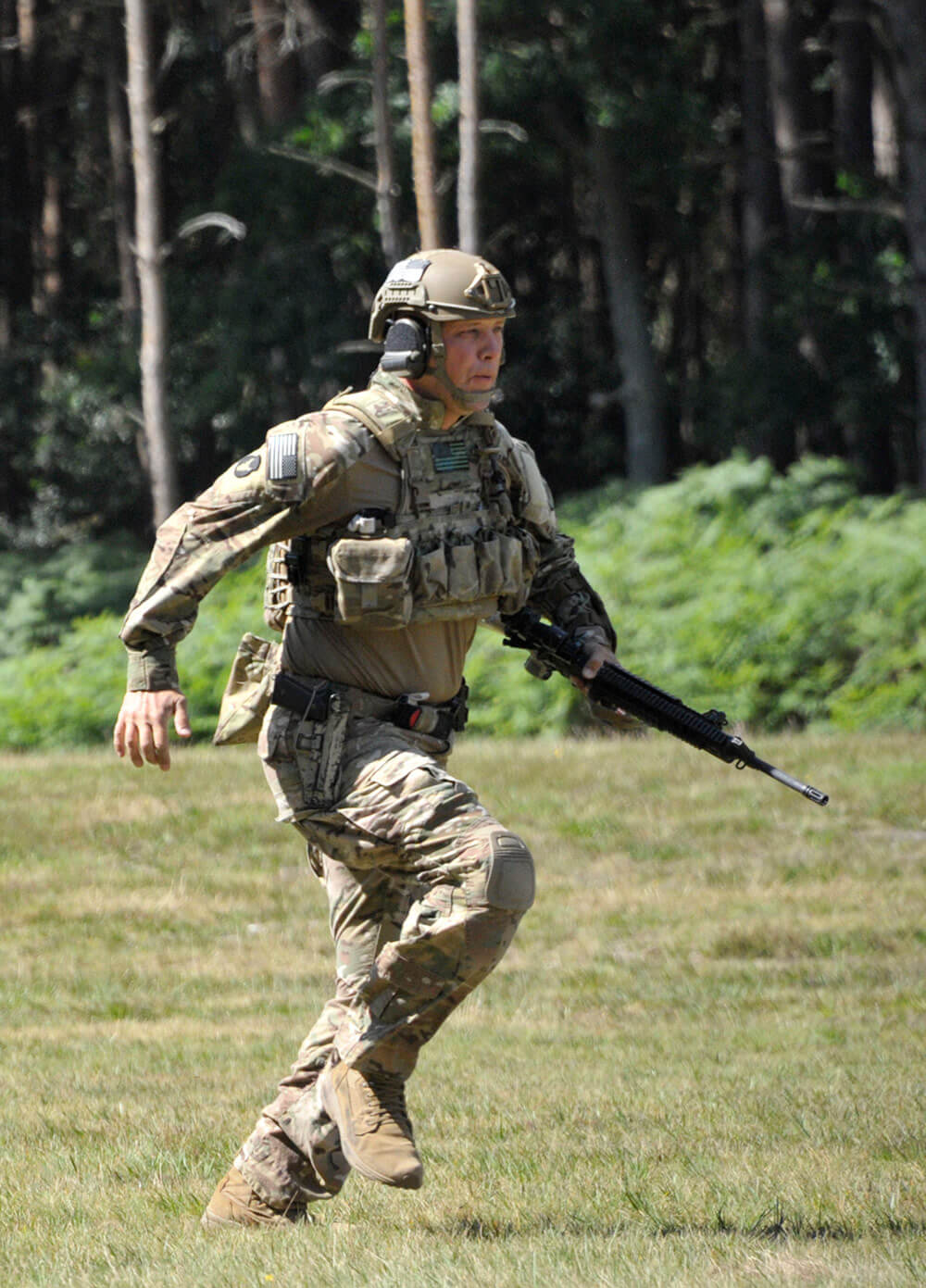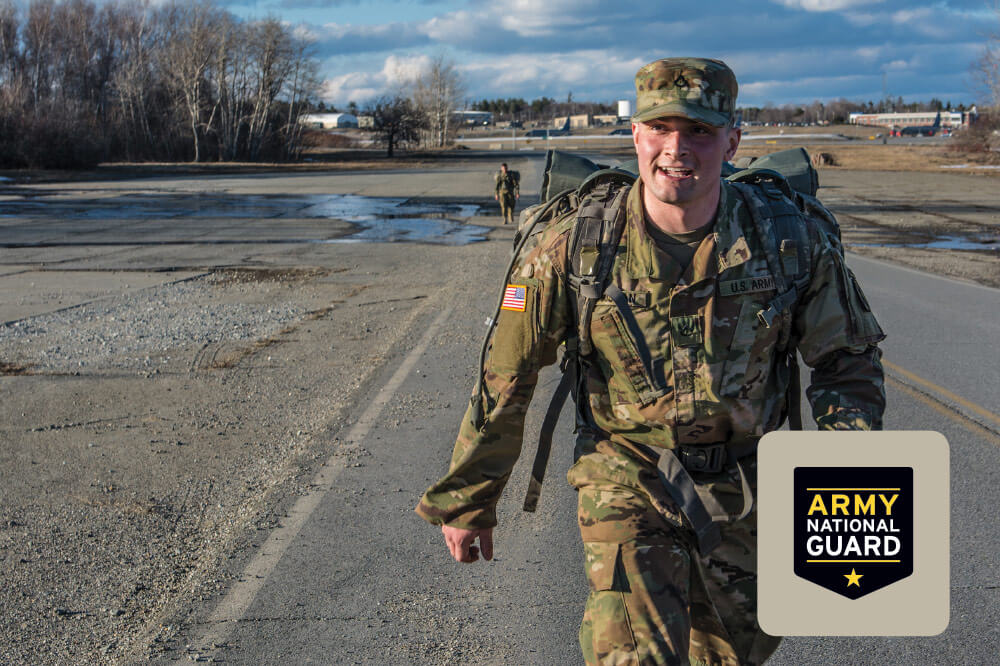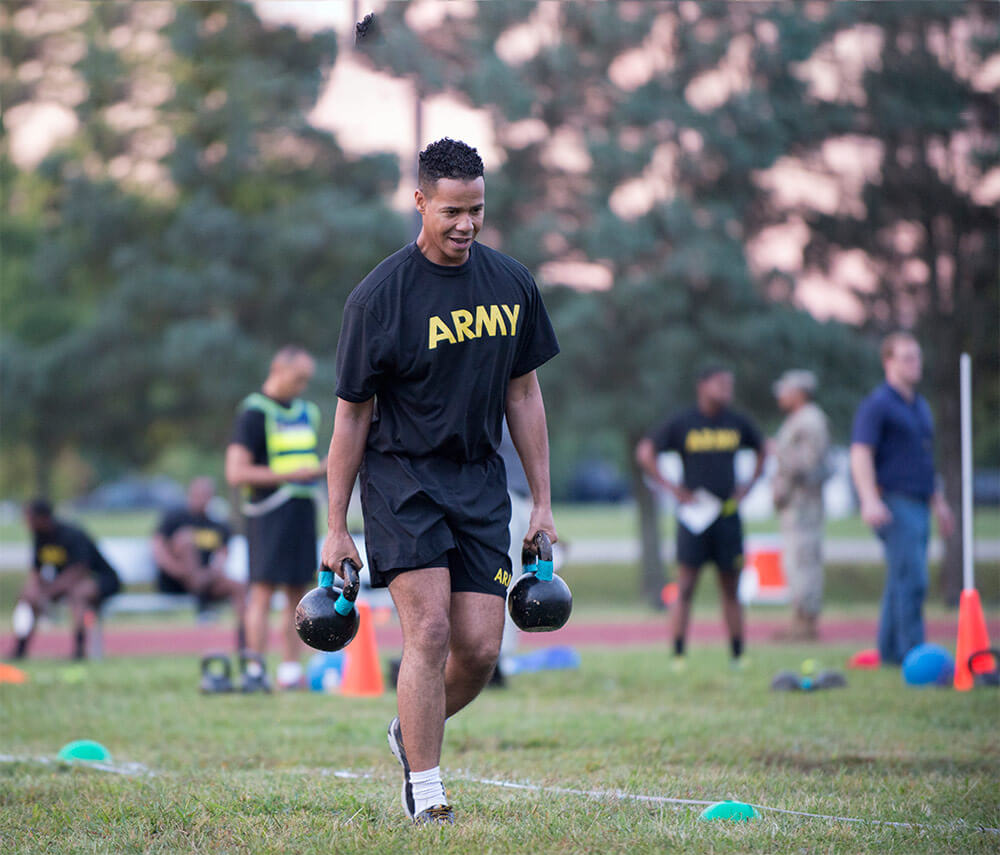National Guard Soldiers Score High Marks at United Kingdom Marksmanship Competition
The sun beats down on two machine gunners from Delta and Charlie teams as they lay prone on the grass and provide suppressive fire at enemy targets 600 meters away. At the same time, riflemen sprint forward on line with them, completing the eight-man section.
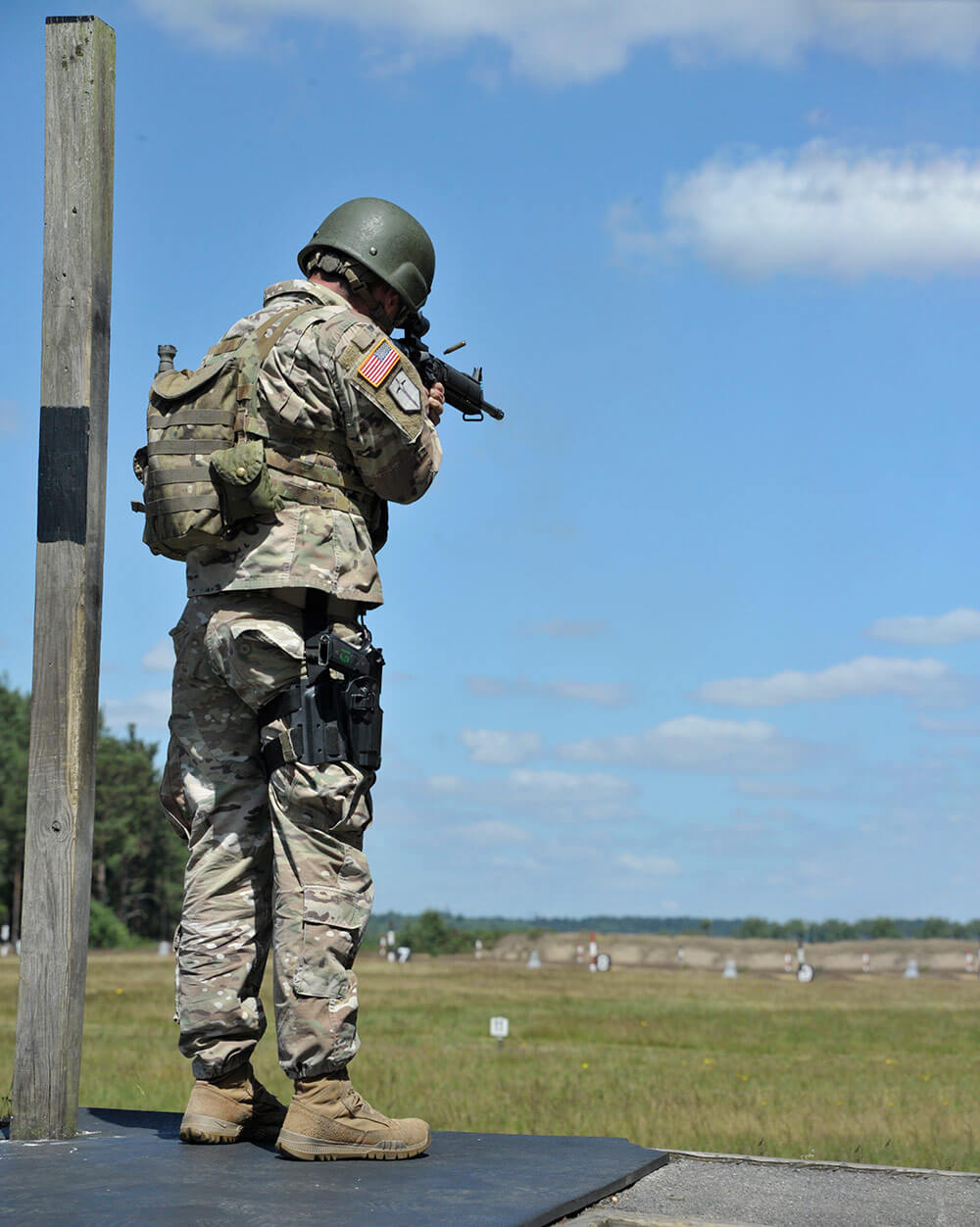
As Charlie team members see the enemy appear, they leap forward into a sprint, moving up and down hills and jumping over trenches to take a prone firing position just 100 meters forward. As soon as they open fire on the enemy, Delta team takes off in a dead sprint, maneuvering through the same obstacles to move online with them.
Sweat pours as team members – wearing at least 22 pounds of gear and body armor not including their helmet, weapon and ammunition – continue this explosive bounding forward until they are 300 meters from the enemy and within the range of the average Soldier’s marksmanship ability. They continue forward 200 meters, riflemen taking a kneeling firing position and machine gunners prone, and take out the remainder of the enemy targets with fierce lethality.
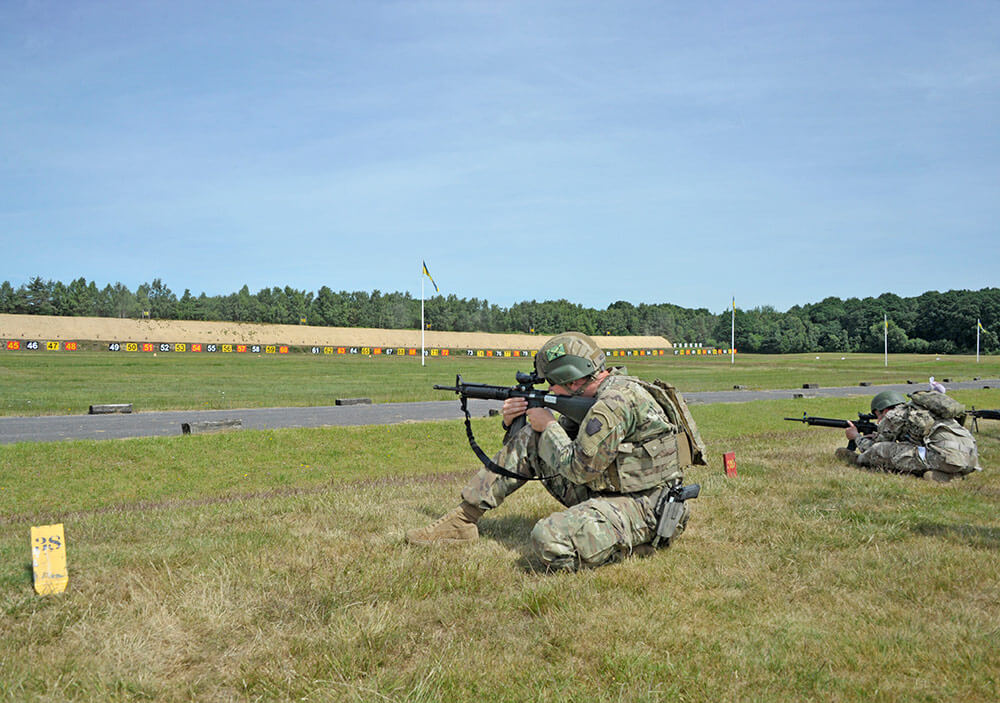
This event, reminiscent of combat environments, was one of over 20 operational “combat-style” shooting matches conducted in the 2018 United Kingdom Defence Operational Shooting Competitions (DefOSC) this past June at Bisley Camp and Army Training Centre Pirbright in Woking, England.
During the Army Reserve Operational Shooting Competition portion of DefOSC, the National Guard All Guard International Combat Team displayed its lethal skills by winning first place in five matches and placing in the top three in 11 of 13 matches.
“All the events were like combat,” said All Guard Team member 1LT Garrett Miller of the 2nd Squadron, 104th Cavalry Regiment, Pennsylvania Army National Guard. “Each event was custom tailored to apply competitive pressure to the participants in different ways.”
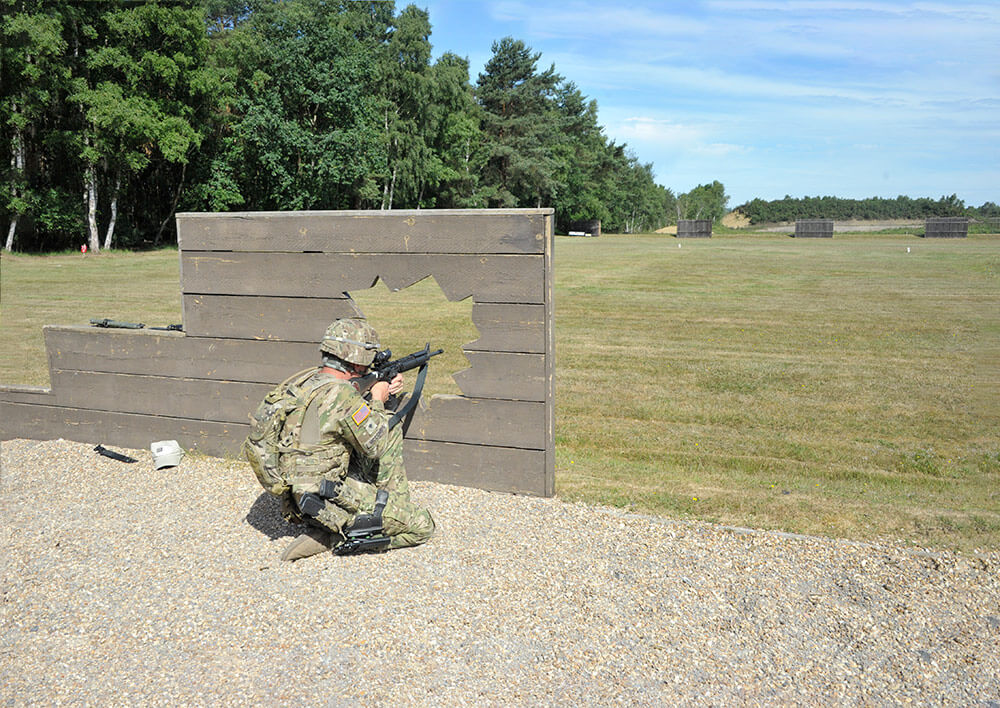
Being lethal in combat is not an easy task. One of most challenging elements in this competition – similar to combat – was the speed required to move into position and engage targets.
“The competitors are challenged to sprint 100 meters forward, charge their rifle, obtain a steady position and fire as many rounds as possible at a 100-meter target in just 25 seconds, then remain in position and fire the rest of the remaining rounds of a 20-round magazine in 35 seconds at a 200-meter and 300-meter target,” said 1LT Miller, describing the Attack and Reorganize Assessment. “Then from there, the match moves right into three more phases without any reprieve.”
For the Urban Contact Assessment event, SSG Michael Richey of the Missouri National Guard Joint Force Headquarters said, “100- to 300-meter targets would expose themselves for only three or four seconds, during which time we had to go from the standing position to the kneeling position and engage the target.”
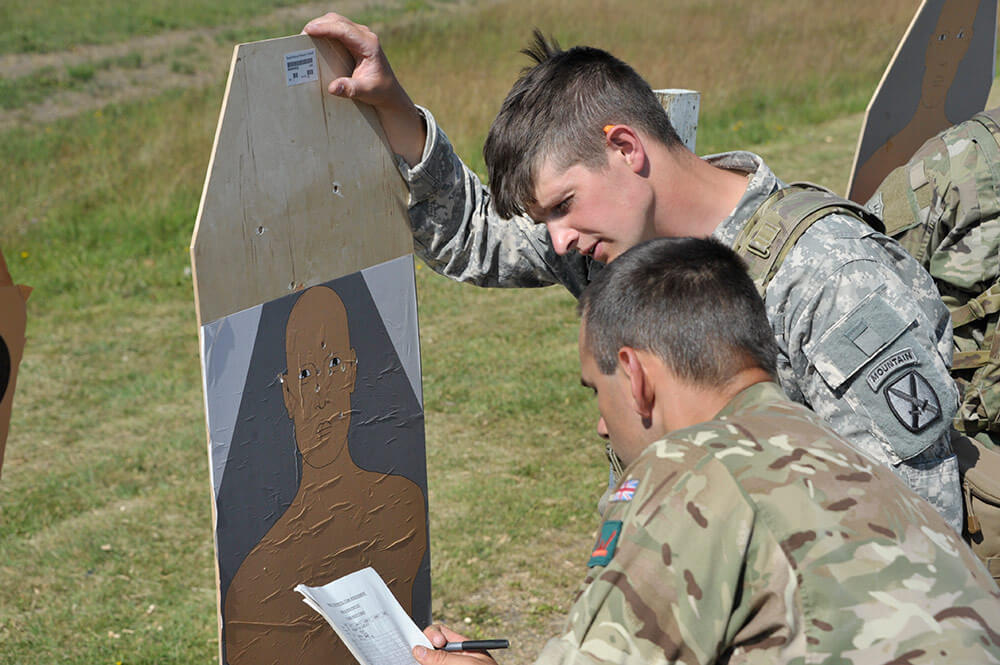
As if the speed of movement and target engagement was not enough of a challenge, the ease of movement was also affected by the pounds of gear and body armor Soldiers were required to wear. The protective gear was similar to the requirements for combat.
“It was difficult to balance the thrill of charging forward and diving into position with the need to calmly place shots center mass in each target before the time expired,” 1LT Miller said. “Oh, and all while wearing body armor, plates and 10 kilograms (22 pounds) of kit.”
“The requirement to wear body armor and gear during the match greatly increased fatigue throughout the competition and also heart rate during the course of fire,” SSG Richey said.
While the individual aspects of the competition were challenging and combat-oriented, the team matches seemed to be most like combat.
“You had to shoot, move and communicate as a team, which is what you’ll be doing in combat,” SSG Richey said.
The National Guard All Guard International Combat Team consisted of 10 members and two team managers:
- MAJ David Stapp, team officer in charge, Arkansas National Guard
- MSG Greg Neiderhiser, team noncommissioned officer in charge, Pennsylvania National Guard
- CPT Robert Lee, team member, Texas National Guard
- 1LT Garrett Miller, team member, Pennsylvania National Guard
- SFC Christopher Catlin, team member, Colorado National Guard
- SFC Paul Deugan, team member, Iowa National Guard
- SFC David Keenom, team member, Tennessee National Guard
- SSG Brandon Hornung, team member, Illinois National Guard
- SSG Michael Richey, team member, Missouri National Guard
- SGT Tyler Goldade, team member, North Dakota National Guard
- SGT Maxium Nickerson, team member, Vermont National Guard
- SPC Jeremy McCombs, team member, Colorado National Guard
In this long-standing shooting competition, the National Guard and British Army Reserve battle for the Fortuna Trophy. The competition consists of four matches: Advance to Contact, Defence Assessment, Pistol Close Quarter Combat and Urban Contact Assessment.
The All Guard Team arrived with the main goal of winning the Fortuna Trophy and pushing themselves to their limits. They did that and more.
In addition to capturing the trophy, several other awards were won by the team and individual members:
- Fire Team Combat Snap Shooting Assessment – All Guard Team
- Fortuna Cup (highest individual aggregate on the Fortuna winning team) – 1LT Miller
- Advance to Contact (contributes to Fortuna Trophy) – 1LT Miller
- Pistol Close Quarter Combat (contributes to Fortuna Trophy) – SFC Deugan
- Urban Contact Assessment (contributes to Fortuna Trophy) – SSG Richey
- Fleeting Encounter – SPC McCombs
“Winning matches that utilize rifle and pistol show how well-rounded of a shooter you are,” SSG Richey said. “It felt good to win a combined rifle and pistol match.”
“Winning the Fortuna Cup is what I consider the highest honor I could possibly achieve at any operational shooting competition, because of the other names that are inscribed on it,” 1LT Miller said. “Every year, the trophy is engraved with the [names of the winning team members]. There are two [engraved] names in particular that have great relevance to me – 1SG Greg Neiderhiser and CPT J.R. Treharne.
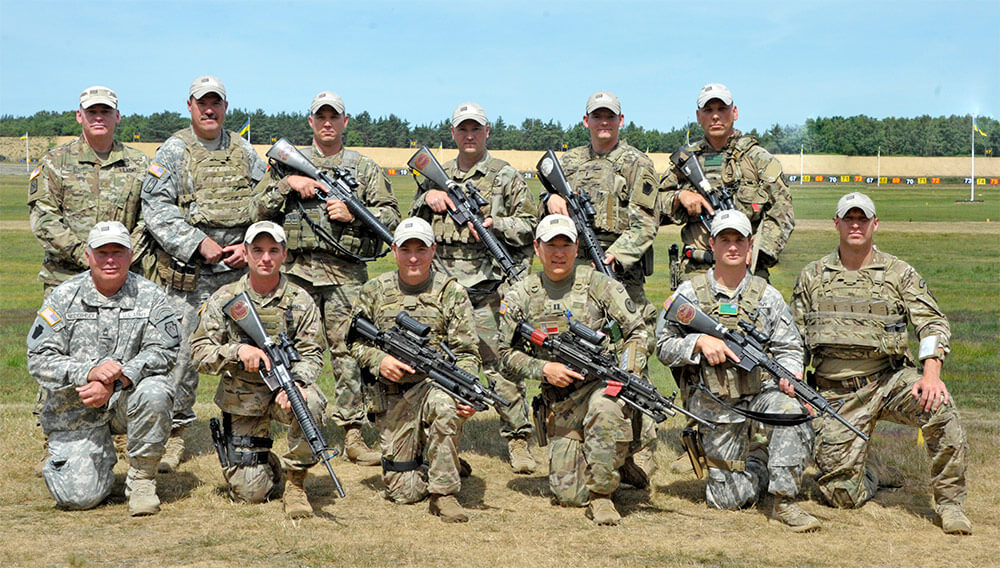
“Now MSG Greg Neiderhiser and COL J.R. Treharne have both served as influential coaches and professional mentors to me since I was a young Cadet. I certainly wouldn’t be where I am today as a competitor and a Soldier if it wasn’t for their mentorship. Knowing that my name will be forever displayed next to theirs on that trophy pays special tribute not just to my achievement, but their skill and passion as coaches and professionals.”
The All Guard Team accomplished its goal of winning the Fortuna and received many other honors, but the most important achievements were improved combat-oriented marksmanship skills and knowledge to bring back to the United States.
“This competition helps us validate our training methods and strategies,” 1LT Miller said.
“Soldiers from all ranks, MOSs, status and levels attend and try their best. This multi-echelon exposure allows everyone to progress much faster than they normally would with just isolated training back at their home unit. Here, they can pick and choose tactics and techniques they observe from Soldiers standing right next to them on the firing line and bring those back to their home unit. “
“This competition was challenging and more realistic in regards to combat-type shooting than other matches we shoot,” SSG Richey said. “Our team participating in this competition enables us to bring that challenging and realistic style of shooting back to our respective states.”
These competitions are training multipliers that need more attention and participation.
To find out more about how to participate, contact the National Guard Marksmanship Training Center at 501-212-4420/4517/4520 or ng.ar.ararng.mbx.ngmtc@mail.mil or visit the center’s Facebook page at Facebook.com/NGMTC/.
By Contributing Writer MAJ Theresa Austin
